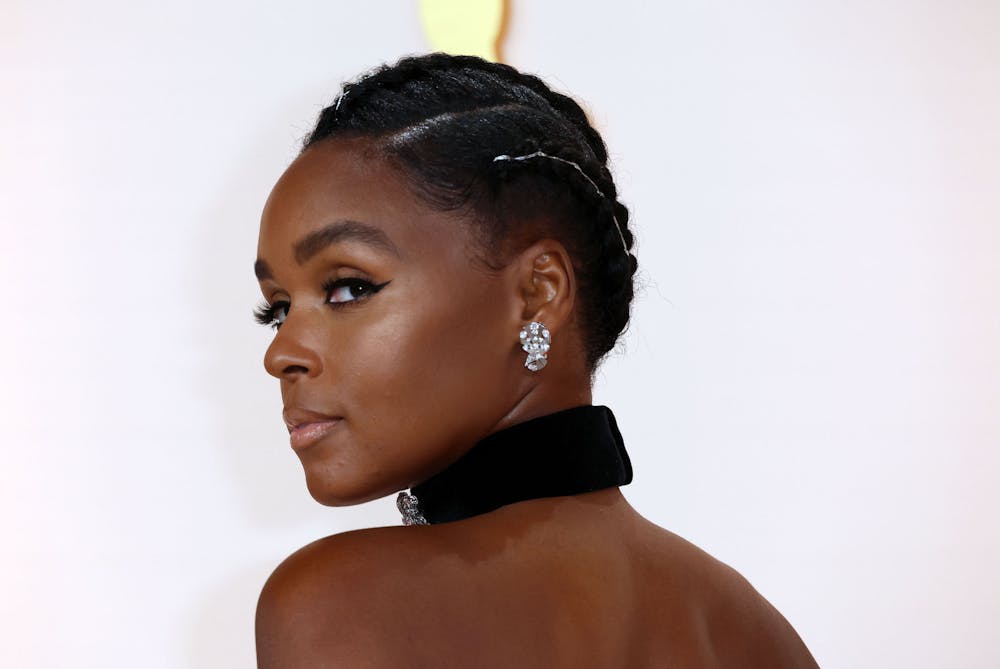In the past couple of years, it seems like wherever one turns, there is Janelle Monáe. Although they’re best known for their music, they have also acted in a number of blockbuster films such as “Moonlight,” “Hidden Figures” and most recently, “Glass Onion.” They have also tried their hand at film production, writing and starring in “Dirty Computer,” a film accompanying the album of the same name.
It should come as no surprise, then, that their latest musical work, “The Age of Pleasure,” takes significant departures from their previous music. Five years after “Dirty Computer”— the last album Monáe released — it’s clear their influences have shifted.
“The Age of Pleasure” opens with “Float,” which immediately calls to mind the more modern sounds of Beyoncé. The horns of Seun Kuti and his band Egypt 80 are featured prominently on this beat, whose individual sections ebb and flow, bringing different timbres to the foreground throughout.
The intro and choruses of this tune sound relatively familiar to Monáe’s previous sound, but where they really surprise the listener is in the verses, which drop hard into triplet-oriented rap. Monáe’s flow is relaxed and upbeat, laying just behind the beat and matching the haughty lyrics in tone.
Monáe organized the songs on “The Age of Pleasure” such that each bridges seamlessly into the next, allowing it to feel like one cohesive piece of music. Far from stagnating the album, though, these transitions are well-marked and cleverly produced, adding an element of unity.
“Lipstick Lover,” the album’s debut single, steps back from rap and moves more toward pop composition and production for the vocals, landing closer to Monáe’s previous work. The beat is sparse and funk-inspired, allowing the bass to carry the most weight, punctuated with understated guitar and drums.
This floats into “The Rush” — which features Amaarae and actress Nia Long — maintaining the soft production and groove-based beat. This pair of songs captures the understated passion that permeates much of the album. At times, the intense sensuality of “The Age of Pleasure” is vividly reflected in the musical choices, but Monáe is also able to tone it down without losing that feeling.
An excellent example of the former technique comes in the form of “Paid in Pleasure,” which adopts a highly percussive dembow beat and a thumping kick drum. The harmony is there — represented by guitar, bass, horns and background vocals — but it is not the primary focus; these instruments can only be clearly heard when the percussion drops out.
The album’s final song, “A Dry Red,” takes a significant departure from the heavy, driven sound of the rest of the album. Nylon-stringed acoustic guitar is accompanied by soft hand percussion for the backing, and Monáe’s mezzo-soprano is markedly more melodic. Dense vocal harmonies add a warm feeling to the song’s pleading passion.
Where Monáe’s previous work had been inspired primarily by pop and secondarily by rap, “The Age of Pleasure” seems to have a wider array of influences. The hip-hop production is much more apparent, evoking the techniques of Kendrick Lamar and SZA, and its heavy use of groove and horns suggests some funky flair as well.
There’s no mistaking what this album is about. Every note drips with sexuality and feeling and — as indicated by its title — pleasure is the main focus of nearly every lyric. The cover features a half-nude Monáe, and its marketing has been centered around similar imagery.
Albums with such a singular focus run the risk of wearing out their theme, but “The Age of Pleasure” gracefully explores many aspects of eroticism, pulling them all together into a single complete experience.




